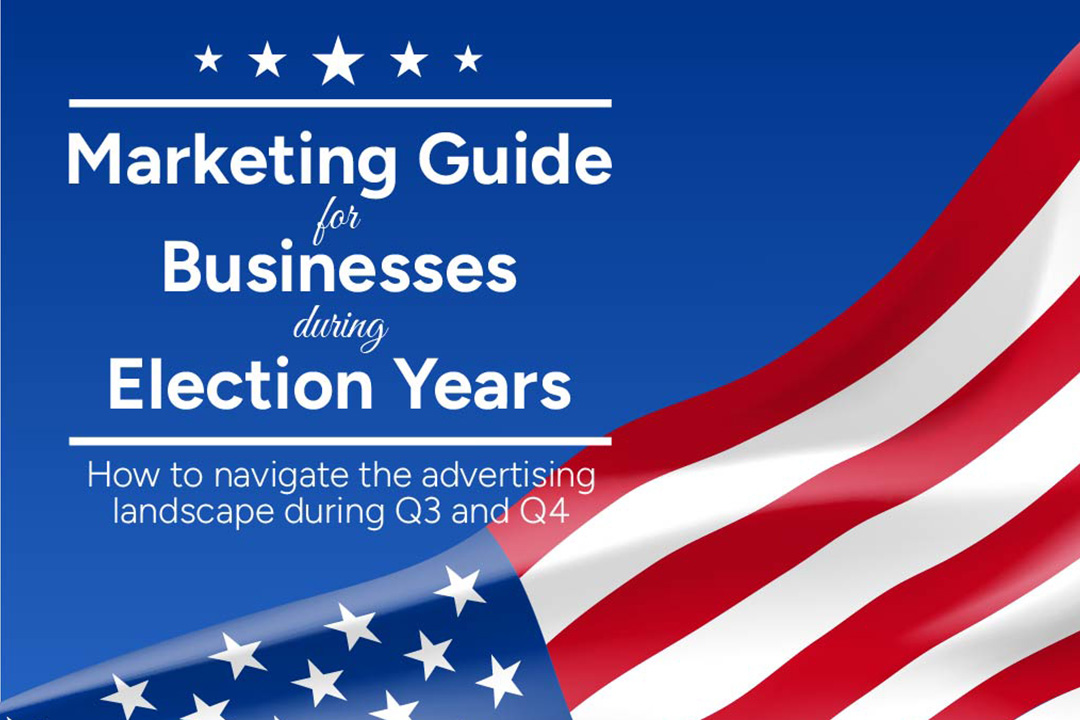Election years bring unique challenges for businesses navigating the advertising landscape. With an estimated $10 billion projected to be spent on political ads in 2024, the competition for ad space and consumer attention will be intense. This guide provides practical strategies to help your business adjust its marketing plan and ad spend effectively during this busy period.
Understanding the Election Year Ad Landscape
Evolving Digital Platforms
Since 2020, digital advertising has significantly transformed:
- 2020: Traditional TV and early digital platforms were the main advertising channels.
- 2024: Streaming services and social media have become essential, offering diverse and targeted ad opportunities.
Action Point: Embrace new platforms like streaming services and social media to connect with your audience in varied and effective ways.
Timing and Ad Saturation
In both 2020 and 2024, expect a surge in political ads leading up to the election:
- 2020: Political ad spending reached about $8.5 billion.
- 2024: Projected spending is over $10 billion, indicating a 17.6% increase and heightened competition.
Action Point: Strategic timing and placement of your ads are crucial to avoid being overshadowed by political advertising.
Comparing 2024 to 2020
- Increased Budgets: Political ad spending is significantly higher in 2024 compared to 2020, making the advertising space more competitive.
- Platform Preferences: Streaming services and social media are now dominant, replacing traditional TV as key advertising channels.
- Ad Saturation: The expected spike in ad spending in 2024 makes competition fiercer, especially on major digital platforms.
Recommendations for Your Marketing Strategy
Strategic Placements and Content Creation
Leverage Streaming and Low-Competition Platforms
- Shift to Streaming Services: Consumers often move to streaming platforms to avoid political ads. Advertising on Connected TV (CTV) and platforms like YouTube can help you reach them effectively.
- Utilize Low-Competition Platforms: Platforms such as LinkedIn, Spotify, and TikTok, which ban political ads, offer a less cluttered environment for your ads.
Tips:
- Connected TV and YouTube: Create engaging, non-political content that stands out and resonates with your audience.
- LinkedIn, Spotify, TikTok: Use these platforms for targeted campaigns where competition is lower.
Create Positive Content on Major Platforms
- Platforms like X (formerly Twitter), Snapchat, Meta: Differentiating your ads with positive, optimistic content can make them stand out amid the typically negative political ads.
Tips:
- Content Focus: Highlight community stories, success narratives, or positive customer feedback.
- Visual Appeal: Use welcoming and vibrant visuals to attract attention.
Ad Spend Allocation
Increase Your Overall Budget
- Consideration: To remain competitive, consider increasing your marketing budget by 5-10%.
Shift Budget Timing
- Timing Strategy: Focus more budget on August, September, and October when consumer interest in your products or services might peak.
Tips:
- Budget Flexibility: Plan for increased spending during high-impact months to maintain visibility.
- Seasonal Campaigns: Align your campaigns with key consumer periods, such as back-to-school or holiday shopping.
Agility and Safeguards
Use Negative Keyword Lists
- Purpose: Prevent your ads from appearing in undesirable contexts by excluding specific keywords.
Deploy Placement Exclusion Lists
- Purpose: Exclude specific websites, apps, or channels that may not align with your brand values.
Apply Sensitive Category Exclusions
- Purpose: Avoid categories related to sensitive or controversial topics to maintain a positive brand image.
Tips:
- Keyword Management: Regularly update your negative keyword list to avoid new political topics or controversies.
- Placement Controls: Use analytics to monitor and adjust exclusions based on ad performance.
- Category Filters: Ensure your ads appear in contextually appropriate settings.
Monitoring and Flexibility
- Stay Updated: Keep informed about current events to refine your keyword and placement strategies.
- Track KPIs: Monitor Key Performance Indicators (KPIs) to identify and address ad fatigue or performance issues promptly.
Cutting Through the Noise
To navigate the complexities of an election year, consider:
- Exploring streaming and audio platforms.
- Adjusting your budget as needed.
- Timing your spending strategically.
Safeguards are crucial for maintaining the integrity of your messaging but might also limit your reach. While election years add complexity to your marketing efforts, your proactive approach can set the stage for ongoing success.
Final Thoughts
This guide aims to help your business adapt and thrive during the unique challenges of an election year. By strategically adjusting your marketing plan and ad spend, you can effectively reach your audience and achieve your business goals, even amid the noise of political advertising.

